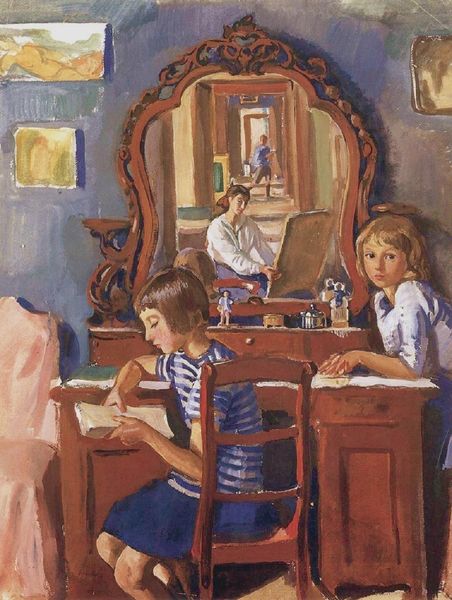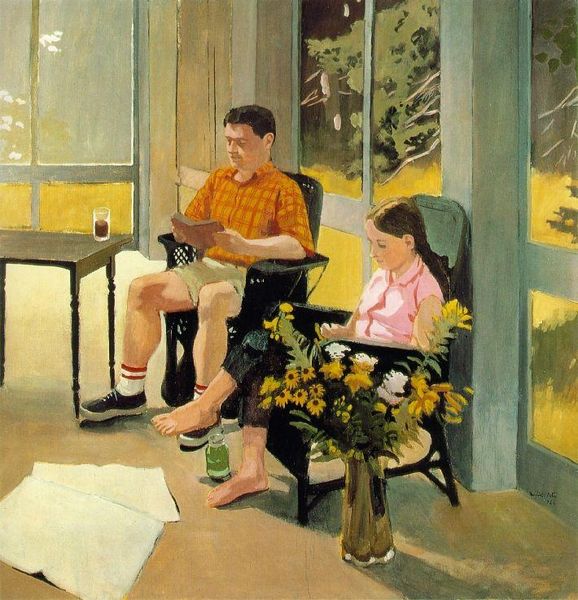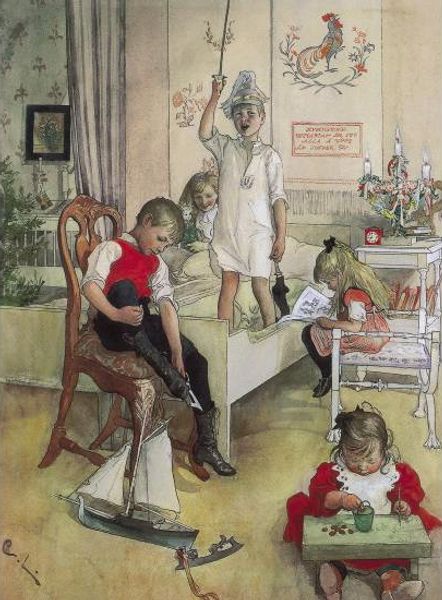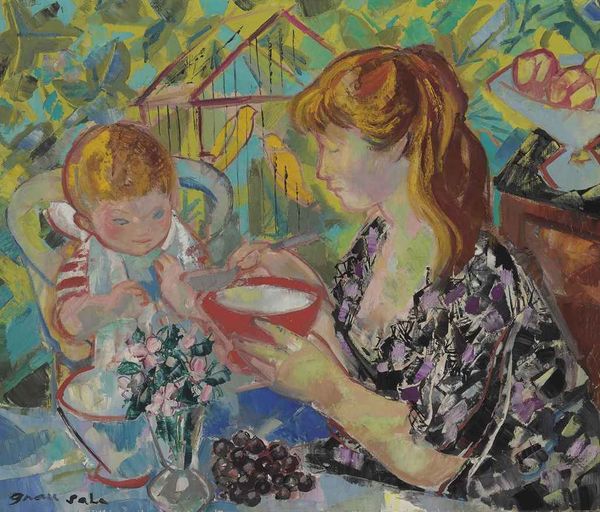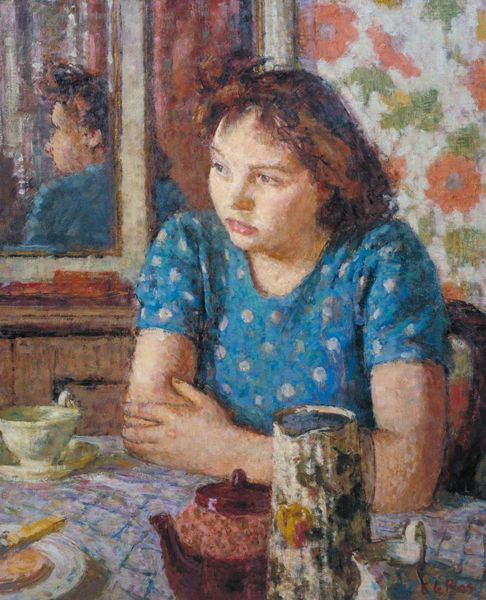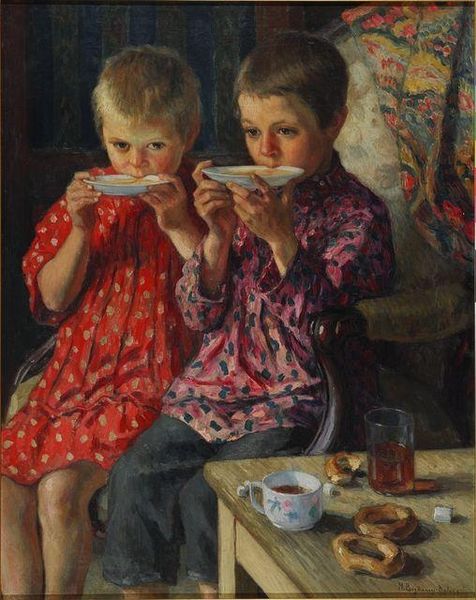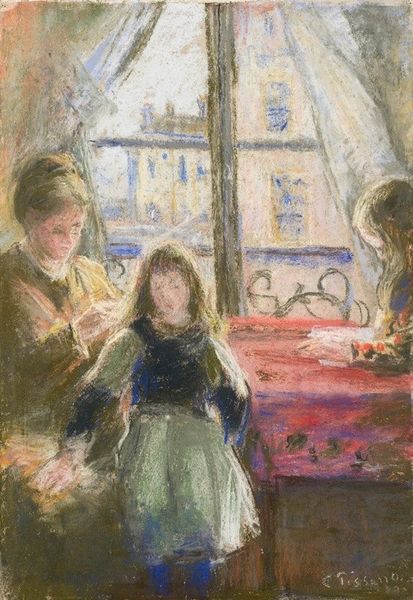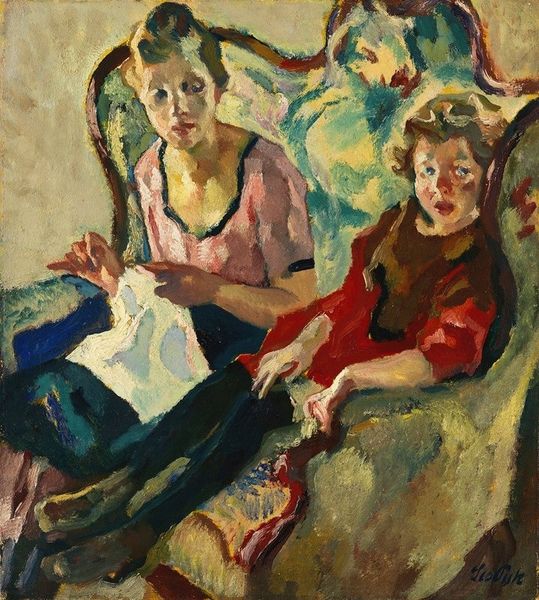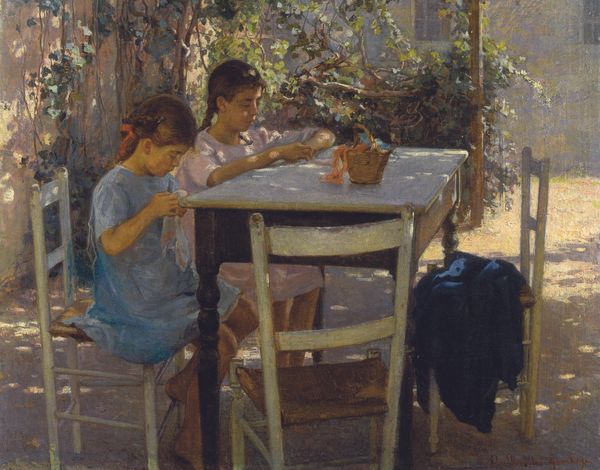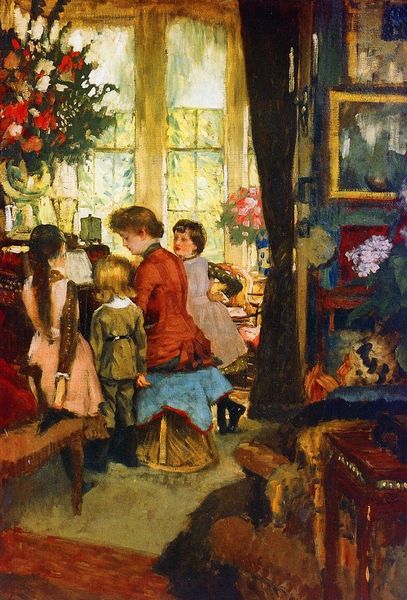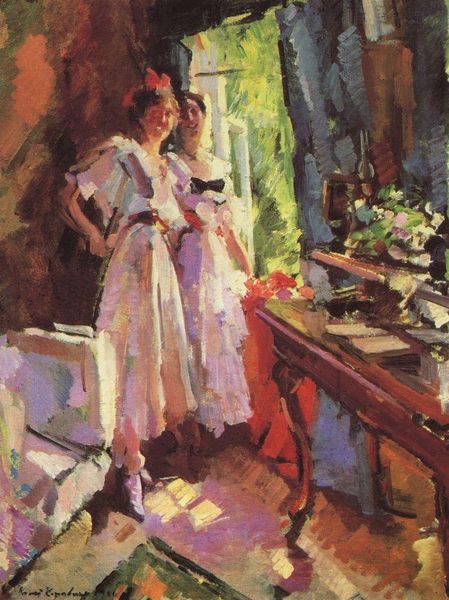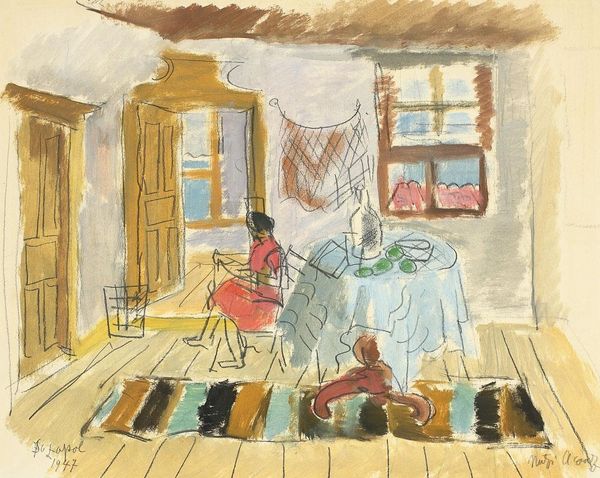
Copyright: Public domain US
Editor: So, this is Zinaida Serebriakova's "On the terrace in Kharkov" from 1919, an oil painting that strikes me as an intimate, almost domestic snapshot. There's something poignant about its everyday subject matter, considering it was painted during such a turbulent period in history. What catches your eye? Curator: It's precisely that tension between the intimate and the historical that I find compelling. Look at the composition: a family scene, seemingly idyllic. But painted in 1919, during the Russian Civil War, in Kharkov, a city that changed hands multiple times? This wasn't just a family portrait; it was an act of defiance, a claim on normalcy amidst chaos. Consider how art institutions like museums contribute to the perception of art made in these difficult periods; What do you notice about the use of light and space? Editor: The light is soft, and the open window pulls the viewer into the scene, yet the peeling plaster and washing hanging outside suggest a certain instability. Is she intentionally juxtaposing the internal comfort with the external uncertainties? Curator: Precisely. And look closer – what does this tell us about how Realism as an aesthetic is engaged at a time like this? It's not just realism as capturing likeness, but realism as resisting erasure. By painting her family in their daily lives, Serebriakova is resisting the larger narrative of war and upheaval and making a socio-political claim. The placement of women in painting is a key concern during this period as well; consider the social expectation that women only operate within these personal spheres. Editor: So, this intimate portrayal almost serves as a silent form of political expression in an age when few other means would be accepted, or indeed possible? It challenges the expectation, even within portraiture, of monumentalising those with military and political power? Curator: Exactly. The political landscape greatly informs how Serebriakova pictures the domestic realm, giving a certain agency to her practice as an artist and her family, too. The mundane becomes monumental not for status, but for resilience. What I take away is how war and conflict dramatically redefines our idea of not only beauty, but the function of paintings displayed within institutional contexts. Editor: I’d never have considered the choice of domesticity as a way of embedding a work so directly into its socio-political context. Now, I see how limiting its setting and content is actually a real strength of the painting. Curator: Indeed, It reframes the way that history and memory are documented through art.
Comments
No comments
Be the first to comment and join the conversation on the ultimate creative platform.
